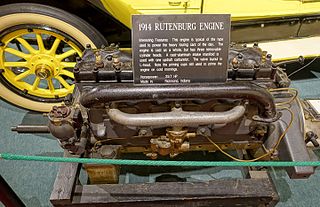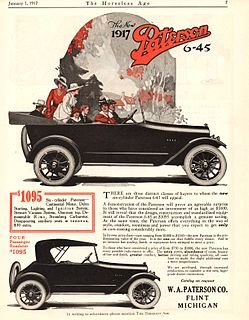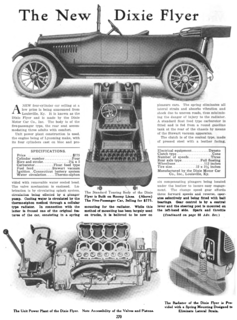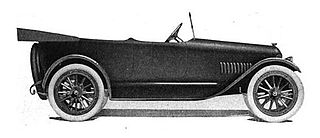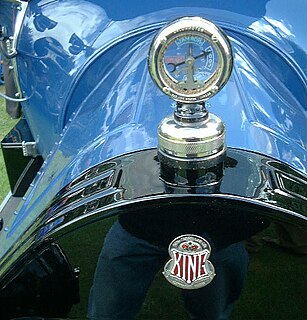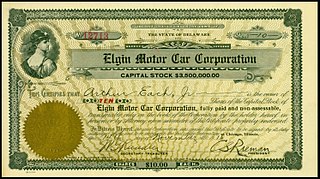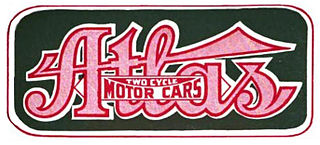 | |
| Industry | Automobile |
|---|---|
| Founded | 1912 |
| Defunct | 1917 |
| Headquarters | Indianapolis, IN United States |
| Products | Automobiles |
The Pathfinder was a Brass Era car built in Indianapolis, Indiana from 1912 to 1917.

The Brass Era is an American term for the early period of automotive manufacturing, named for the prominent brass fittings used during this time for such things as lights and radiators. It is generally considered to encompass 1896 through 1915, a time when these vehicles were often referred to as horseless carriages.
After the Parry Auto Company passed into receivership in 1910, the Motor Car Manufacturing Company was created by its creditors. That particular name was chosen as they had not decided what to name their new automobile. Indeed the New Parry continued to be produced until a little after the new Pathfinder was introduced in 1912. Board members included former or then-current officials from the Parry Auto Company, Dayton Motor Car Company, American Ball Bearing Company, and Standard Oil. [1] Great things were expected from such a strong group of businessmen.

The Parry (1910) and New Parry (1911–1912) were both Brass Era cars built in Indianapolis, Indiana by the Parry Auto Company.

Stoddard-Dayton was a high quality car manufactured by Dayton Motor Car Company in Dayton, Ohio, USA, between 1905 and 1913. John W. Stoddard and his son Charles G. Stoddard were the principals in the company.
Standard Oil Co. Inc. was an American oil producing, transporting, refining, and marketing company and monopoly. Established in 1870 by John D. Rockefeller and Henry Flagler as a corporation in Ohio, it was the largest oil refinery in the world of its time. Its history as one of the world's first and largest multinational corporations ended in 1911, when the U.S. Supreme Court ruled, in a landmark case, that Standard Oil was an illegal monopoly.
One of the advertising slogans of the Pathfinder was "known for reliability," [2] but an equally high emphasis was placed on the appearances of the vehicles themselves. Examples of the latter included a boattail speedster (nearly two decades before the more famous Auburn of the same layout), a paneled storage area for the roadster's top, and vibrant paint color combinations. The Royal Automobile Club of England issued a certificate of performance to the Pathfinder for its strong performance in a time trial in 1912 covering the breadth of the isle of Great Britain, proving the cars were as durable as they were beautiful. [2] Other long-distance outings of note included one man and his chauffeur covering 10,000 miles in the United States with no breakdowns, as well as a Pathfinder 12 driven by Walter Weidely (son of George Weidely, the designer of the engine under the hood) cross-country for a total of 4921 miles. [2] Engines in Pathfinders started with four-cylinder engines, proceeded to six-cylinders, before culminating in Weideley 12-cylinder engines in 1916. The V-12 engined cars were called "Pathfinder the Great, King of the Twelves." [2]

Auburn was a brand name of American automobiles produced from 1900 through 1937.
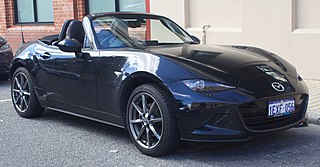
A roadster is an open two-seat car with emphasis on sporting appearance or character. Initially an American term for a two-seat car with no weather protection, usage has spread internationally and has evolved to include two-seat convertibles.
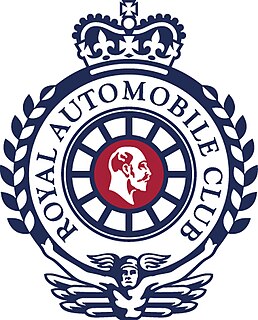
The Royal Automobile Club is a British private club and is not to be confused with RAC, an automotive services company, which it formerly owned.
The main market for Pathfinder was producing cars for export to pre-war Russia. The beginning of World War I closed this market and Pathfinder was forced to refocus on the highly competitive US market.
Wartime shortages of materials financially hindered the Pathfinder company. At the beginning of 1917, it was rumored that Pathfinder would merge with Empire. Instead, the company was gone by years end, and a new company moved into the factory to make shoe polish.

World War I, also known as the First World War or the Great War, was a global war originating in Europe that lasted from 28 July 1914 to 11 November 1918. Contemporaneously described as "the war to end all wars", it led to the mobilisation of more than 70 million military personnel, including 60 million Europeans, making it one of the largest wars in history. It is also one of the deadliest conflicts in history, with an estimated nine million combatants and seven million civilian deaths as a direct result of the war, while resulting genocides and the 1918 influenza pandemic caused another 50 to 100 million deaths worldwide.

The Empire was an American automobile manufactured from 1910 until 1919. Marketed as "the little aristocrat", the Empire 20 was a four-cylinder shaft-driven runabout built in Indianapolis. The model "A" was a conventional runabout for three passengers with a rumble seat. The model "B" had two bucket seats, a longer hood and was geared higher to attain faster speeds.

Shoe polish is a waxy paste, cream, or liquid used to polish, shine, and waterproof leather shoes or boots to extend the footwear's life, and restore, maintain and improve their appearance.
The San Diego Automotive Museum has a 1912 Pathfinder Model E in their collection. All other surviving examples are in private collections.

The San Diego Automotive Museum in Balboa Park in San Diego, California is a museum that features a collection of cars and motorcycles that highlight automotive culture throughout history. The San Diego Automotive Museum is a non-profit corporation under IRS section 501(c) It is housed in the former California State Building, built for the 1935-36 California Pacific International Exposition.
